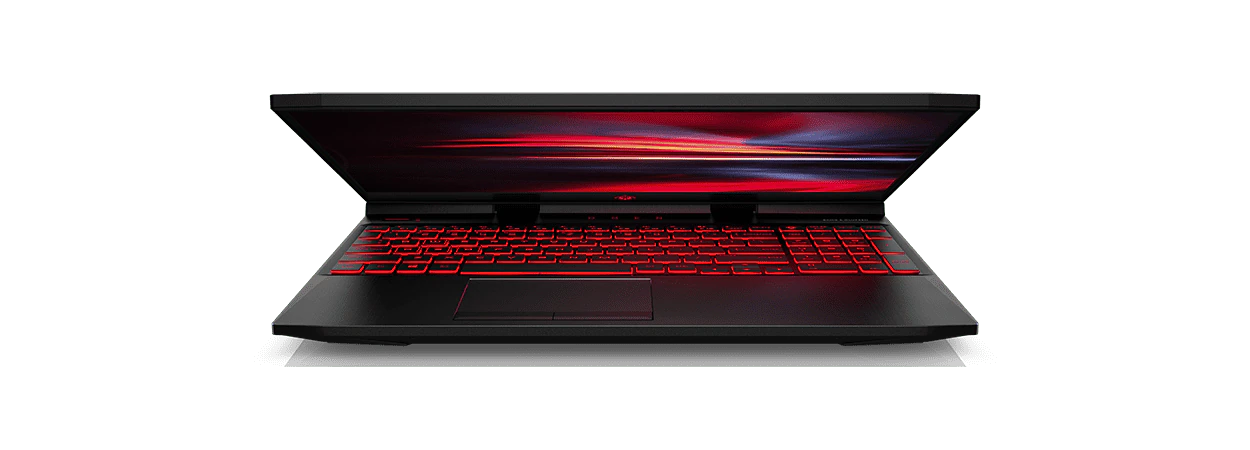Thank you for visiting the HONG KONG HP Store
-
Contact Us
CONTACT USChat with us
- Our specialist are here to help
- Live chat
- Sales
- 85264507529(WhatsApp)
-

- Post Sales
- 85230016720(WhatsApp)
Mon-Fri 8.30am - 5.30pm
(exc. Public Holidays)
Live product demo
Store finder Locate our storesSubmit feedback We value your opinion! - Location
- My Account
Virtual Reality in Education: The Future of Learning Environments


In years past, preparing to go back to school after a relaxing summer break included stocking up on pens, binders, and multi-colored highlighters. Students learned by reading textbooks, and educators constructed lesson plans around writing notes on a chalkboard. Printing out materials to reinforce key topics through homework assignments was the norm.
Today, virtual reality (VR) in education is dominating the landscape of an increasing number of learning institutions. From the youngest digital natives entering kindergarten to university students preparing to enter the workforce, VR technology is penetrating teaching and learning models across the globe.
Virtual reality technology is an immersive and interactive technology that simulates a computer-generated environment, allowing users to experience a sense of presence and interact with virtual objects and surroundings. It typically involves wearing a head-mounted display that tracks the user's movements, creating a sense of being physically present in a virtual world.
As VR technology advances and becomes more affordable, its adoption in education will likely grow. Educators and schools are exploring its potential across various disciplines, including STEM subjects, medical training, cultural education, vocational training, and special education. VR has the potential to revolutionize the way education is delivered, making it more immersive, inclusive, and effective.
Current state of VR in education
A recent study by PwC took a look at VR in education and found that VR learners were:
-
4x faster to train than in the classroom
-
275% more confident to apply skills learned after training
-
3.75x more more emotionally connected to content than classroom learners
Analysis of the study summarized that while it is unlikely virtual reality will completely replace traditional classroom training or online learning in the near future, as the metaverse expands, incorporating VR learning into a blended learning approach is advisable.
When implemented effectively, VR learning, both within the metaverse and outside of it, provides a human-centered experience to improve information retention, enhance productivity, and strengthen engagement without compromising quality.
With 7 out of 10 teachers wanting to use virtual reality technology to “simulate experiences relevant to the coursework that they are teaching,” it’s clear that educators recognize their students can benefit from updated learning methods.
The application of virtual reality technology in education takes many forms. One of the key benefits of VR in education is its ability to provide students with hands-on experiences and simulations. It allows them to explore and interact with complex concepts, environments, and scenarios that may not be readily available or feasible in a traditional classroom setting.
VR can provide immersive simulations that allow students to experience real-world scenarios in a safe and controlled environment. This can be beneficial for training in fields such as medicine, engineering, and aviation, where hands-on experience is crucial.
VR technology can transport students to different time periods and cultures, allowing them to explore historical sites, landmarks, and cultural events. It provides a unique opportunity for experiential learning and can enhance students' understanding of history and culture.
Simulating virtual field trips and tours is another great example of how virtual reality is being implemented in education. Students can visit places that may be geographically distant or inaccessible. They can virtually explore museums, landmarks, ecosystems, and even outer space, providing rich and otherwise off-limits access to experiences.
Benefits of VR in learning environments
VR technology enables learners to "learn by doing" as it provides an environment for them to experiment, practice, and simulate real-life scenarios. By creating a captivating experience, learners can engage with interactive objects that augment their understanding of complex ideas.
This is also complemented by the capability of VR systems to offer real-time feedback and assessments within the virtual environment. By tracking the student's actions, responses, and performance, VR can provide immediate feedback on their progress, identify areas of strength and weakness, and offer guidance accordingly. Adaptive feedback helps students self-assess their understanding and make adjustments in real-time to improve their learning outcomes.
VR technology also promotes equal access to education, as learners can access educational materials and experiences anywhere in the world. Learners who previously could not access traditional learning methods due to physical disabilities, socioeconomic status, or geographic location can now gain the same quality education as others. VR technology offers an inclusive approach to learning, ensuring that no one is left behind in the pursuit of knowledge.
Virtual reality challenges and considerations
Integrating VR technology in educational settings can present certain challenges that need to be addressed for successful implementation. To ensure that VR content aligns with the curriculum and learning objectives, educators can take the following steps.
Define learning objectives
Clearly articulate the specific learning objectives that the VR experience should address. Identify the knowledge, skills, or competencies students are expected to acquire or demonstrate through the VR activity.
Curriculum integration
Identify the relevant subject areas, topics, or units where the VR content can enhance student learning. Ensure that the VR activity aligns with the scope and sequence of the curriculum.
Seek affordable solutions
Look for cost-effective VR hardware options and software platforms that align with your budget. Explore options such as standalone VR headsets or mobile VR solutions, which tend to be more accessible in terms of cost compared to high-end VR setups.
Collaborate with educational institutions, technology companies, and local communities to share resources, pool funds, or seek grants dedicated to integrating VR into education. This can help alleviate the financial burden.
Pilot testing
Before implementing VR content on a larger scale, conduct pilot testing with a small group of students or educators. Observe how the VR experience supports the intended learning objectives and gather feedback from participants. Make necessary adjustments or modifications based on the outcomes of the pilot testing.
Ongoing reflection and iteration
Continuously reflect on the effectiveness of the VR content and its alignment with the curriculum. Seek feedback from students, educators, and other stakeholders to identify areas for improvement or modifications. Regularly update and refine the VR content to ensure its relevance and effectiveness in supporting the curriculum.
Preparing educators for VR integration
Wondering where to begin? While VR benefits in education far outweigh the drawbacks, many educators still face an often steep learning curve to adopting virtual reality in their classrooms. Before incorporating VR technology into lessons, educators should undergo training to get the most out of the hardware, software, and methodologies involved.
Pedagogical training is a good place to start. Some teachers may be most apprehensive about the IT support or tech knowledge needed to pull off effective lesson plans, but just like traditional teaching practices, defining the objectives of your curriculum comes first.
Educators should explore how VR aligns with the learning goals of a particular unit or semester and identify areas where VR can enhance student comprehension. This may require training on selecting or creating VR content that supports specific topics or concepts in the curriculum.
Pedagogical strategies particularly well-suited to virtual reality include:
-
Gamification: making learning more fun and motivating by using game-like features such as challenges, rewards, and competition.
-
Cooperative learning: working in groups or pairs to complete tasks or solve problems. It helps students learn from and support each other, develop teamwork skills, and share ideas.
-
Inquiry-based learning: encouraging students to ask questions, investigate, and explore topics on their own. Instead of memorizing facts, students are inspired to think critically, analyze information, and come up with their own conclusions.
When it comes to creating content for VR in education there are several tools and platforms that instructors can explore to create or customize virtual reality experiences. Here are some examples:
CoSpaces Edu
CoSpaces Edu is a platform that allows educators and students to create their own virtual reality experiences. It offers a drag-and-drop interface where users can build interactive 3D scenes, add animations, and incorporate multimedia elements. CoSpaces Edu also provides options for coding and scripting to enhance the interactivity of the VR content.
A-Frame
A-Frame is an open-source web framework for building VR experiences that can be viewed through a web browser. It uses HTML markup language and JavaScript, making it accessible to educators with some coding knowledge. A-Frame allows for the creation of 3D scenes, interactive elements, and multimedia integration.
Engage
Engage is a VR education platform that provides tools for educators to create and share VR lessons and experiences. It offers a range of templates, interactive objects, and multimedia integration options to support instructional design. Engage also allows for real-time collaboration, making it suitable for virtual classrooms or remote learning.
Nearpod
Nearpod is an interactive learning platform that allows teachers to create and deliver engaging lessons to students. It enables educators to create multimedia-rich presentations, interactive activities, quizzes, and virtual reality experiences that can be accessed by students on their devices, such as computers, tablets, or smartphones.
The future of VR in education
Future advancements in VR technology will likely bring even greater levels of immersion and realism to educational experiences. Students will find themselves transported to historically significant events, exploring intricate 3D models of microscopic organisms, or stepping into virtual laboratories to conduct experiments in physics or chemistry. The level of detail and interactivity will be so captivating that it will blur the line between the virtual and physical worlds.
Virtual reality as a means of global collaborative learning can connect students across geographical boundaries, enabling them to work, communicate, and learn together in shared virtual spaces. Students from different cultures, backgrounds, and countries can engage in projects, cultural exchanges, or language learning activities, fostering empathy, understanding, and global citizenship.
In the digital age, teachers have an opportunity to reconsider the purpose and goals of education to meet the evolving needs of students. Using virtual reality in education can help encourage students to think creatively and embrace innovation in their development. VR provides opportunities for project-based learning, problem-solving, and hands-on experiences that allow students to explore their interests, collaborate, and create meaningful digital artifacts.
VR benefits in education also show up in a growing number of virtual campuses. Universities and professional learning institutions, in particular, are making an effort to equalize access to education and have become increasingly accepting of hybrid attendance policies. As a student at a virtual campus, you have the flexibility to participate in your courses from anywhere with an internet connection. You can log in to the virtual campus platform using your computer or mobile device and engage in learning activities at your convenience. Avatars are used for virtual identity, and various multimedia resources are integrated via learning management systems to enhance your learning experience.
Summary
The possibilities of VR technology in the field of education are immense. As this technology evolves, VR is becoming a powerful tool for personalized learning. VR simulations that adapt to an individual's pace and style of learning help learners grasp difficult concepts more easily. It is crucial to approach the integration process with careful planning, ongoing evaluation, and a focus on aligning VR experiences with curriculum goals and student needs.
With virtual reality in education, it is possible to create immersive and interactive learning experiences that will revolutionize how we acquire knowledge. Educators and institutions play a huge role in effectively integrating technology into their teaching practices, enhancing student engagement, supporting learning goals, and preparing students for success in a digital age.
- Our specialist are here to help
- Live chat
- Sales
- 85264507529(WhatsApp)
-

- Post Sales
- 85230016720(WhatsApp)
Mon-Fri 8.30am - 5.30pm
(exc. Public Holidays)
Live product demo









